- Luật
- Hỏi đáp
- Văn bản pháp luật
- Luật Giao Thông Đường Bộ
- Luật Hôn Nhân gia đình
- Luật Hành Chính,khiếu nại tố cáo
- Luật xây dựng
- Luật đất đai,bất động sản
- Luật lao động
- Luật kinh doanh đầu tư
- Luật thương mại
- Luật thuế
- Luật thi hành án
- Luật tố tụng dân sự
- Luật dân sự
- Luật thừa kế
- Luật hình sự
- Văn bản toà án Nghị quyết,án lệ
- Luật chứng khoán
- Video
- NGHIÊN CỨU PHÁP LUẬT
- ĐẦU TƯ CHỨNG KHOÁN
- BIẾN ĐỔI KHÍ HẬU
- Bình luận khoa học hình sự
- Dịch vụ pháp lý
- Tin tức và sự kiện
- Thư giãn

TIN TỨC
fanpage
Thống kê truy cập
- Online: 35
- Hôm nay: 790
- Tháng: 9492
- Tổng truy cập: 5154756
2016 timeline contents
2016-2020 -
China builds the longest undersea tunnel in the world
2016 —
Completion of the Panama Canal expansion project
Microchipping of all dogs in England
Euro 2016 is held in France
Rio de Janeiro hosts the Olympic Games
The first manned flight of SpaceX's Dragon V2
India's first manned space flight
India launches its second unmanned lunar probe
The International Lunar Observatory begins operations
The first hotel in space
Balloon trips up to 20 miles high
InSight touches down on Mars
The Juno probe arrives at Jupiter
The world's largest single-aperture telescope is completed in China
---------------------------------------
2016-2020
China builds the longest undersea tunnel in the world
China's latest megaproject is a 76 mile (122 km) undersea tunnel running from Dalian to Yantai. It surpasses the combined length of the world's two longest undersea tunnels – Japan's Seikan Tunnel and the Channel Tunnel between Britain and France. With previous journeys cut by 800 miles, it forms a vital high-speed rail link between the north and south of the country, boosting economic growth significantly.
This $36 billion project is constructed in less than five years.* It is actually three parallel tunnels – one for cars, one for trains and one for maintenance, placed 100 ft below the sea bed. Vertical shafts are located on island stepping stones to provide ventilation. However, there is much controversy surrounding the route, which passes over two major earthquake fault lines.*
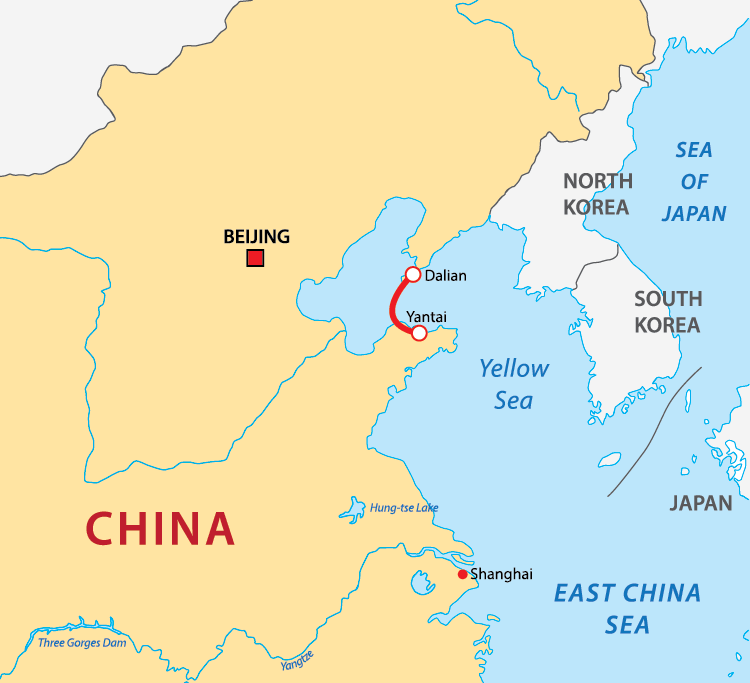
2016
Completion of the Panama Canal expansion project
Built from 1881 until 1914, the Panama Canal was among the largest and most difficult engineering projects ever undertaken. Functioning as a short cut between the Atlantic and Pacific Oceans, it greatly reduced the travel times for ships – enabling them to avoid the lengthy, hazardous Cape Horn route around the southernmost tip of South America.
For nearly a hundred years, the canal enjoyed great success, acting as a key conduit for international maritime trade. By the early 21st century, however, it was handling far more vessel traffic than had ever been envisioned by its builders. In 1934, it was estimated that the maximum capacity of the canal would be around 80 million tons per year. In 2010, the actual figure was nearly 300 million tons and growing rapidly, with over a third of shipping traffic unable to pass through because of size. Global demand necessitated a major upgrade.
Plans were formulated for various improvements – including the excavation of new traffic lanes allowing more and larger ships to transit; two new locks, one each on the Atlantic and Pacific sides; the widening and deepening of existing channels; and the raising of Gatun Lake's maximum operating level. Construction was originally slated to take seven or eight years, with new locks beginning operations in late 2014, almost exactly a century after the canal first opened. In 2012, however, it was announced that the expansion project had fallen six months behind schedule, pushing the opening date back to April 2015. Further delays were reported in September 2014.
In early 2016, construction is finally completed and the new gates are open for transit.* Capacity has now been doubled, allowing the canal as a whole to handle the projected rise in volume to 2025 and beyond. This mega-project eases numerous burdens on the shipping industry, as well as creating huge numbers of jobs among the Panamanian people – generating enough wealth to reduce poverty in the country by almost 30%. However, critics of the project contend that there are serious environmental issues.
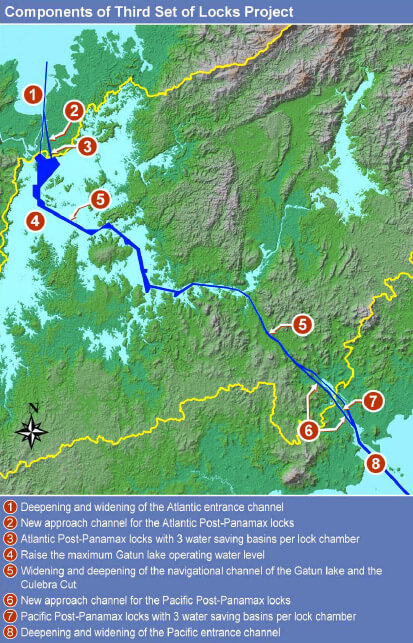
Map of the Panama Canal expansion project in 2016. Credit: PanCanal.com
Microchipping of all dogs in England
In April 2016, a new law comes into effect requiring all dogs in England to be tagged with a microchip implant.* This measure has been introduced in order to cut the growing number of strays. As of 2012, there were 118,932 dogs reported lost or stolen, of which 55,898 (about 47%) were reunited with their owner. Around 6,900 (5%) were put to sleep. This cost £57m (US$89m) to the taxpayer and welfare charities each year. Only 7,098 dogs were microchipped in 2012, barely 0.1% of the 6.7 million dogs in England.
These implants are similar in size to a grain of rice. They are coated in a bio-compatible glass, the same material used in human pacemakers, ensuring they are not rejected. The devices are held firmly in place by fusing to the dog's bodily tissue. A simple procedure can be performed without anaesthetic, using a sterile needle to insert the chip between the shoulder blades.
Similar measures had already been introduced in New Zealand and Northern Ireland. Other countries begin to recognise the benefits of microchipping in the years ahead. By the 2040s, this is being extended into humans.*
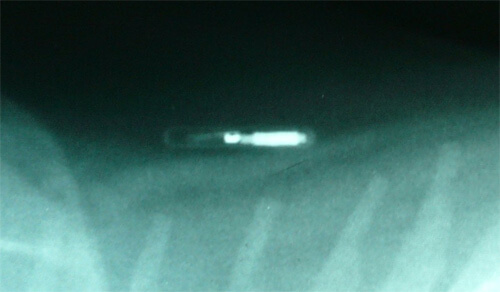
X-ray view of a microchip implant. Credit: Joelmills/Hundehalter
Euro 2016 is held in France
The 2016 European Football Championship is hosted by France between 10th June–10th July 2016. This year, the tournament is expanded in size from 16 to 24 teams, following a plan unanimously agreed by senior officials of all 53 UEFA member nations. The format of the final tournament consists of six groups of four teams, followed by a round of 16, quarter-finals, semi-finals and final. The top two from each group will qualify in addition to the four best third-ranked sides, the same system as was applied in the World Cups from 1986 to 1994. This format generates a total of 51 games, compared with 31 prior to 2016, played over a period of 29 days.

Rio de Janeiro hosts the Olympic Games
Rio becomes the first South American city to host the event, which opens on 5th August 2016 and finishes on 21st August 2016.

The first manned flight of SpaceX's Dragon V2
The Dragon is a spacecraft developed by SpaceX, the American private space company founded by billionaire entrepreneur Elon Musk. It is launched into space by the Falcon 9 two-stage-to-orbit launch vehicle, and is capable of both manned and robotic operation. The maiden flight occurred in 2010, during which it became the first commercially-built and operated craft to be recovered successfully from orbit. The Dragon docked with the International Space Station (ISS) in 2012, again becoming the first commercial spacecraft to do so. Later that year, under NASA's Commercial Resupply Services program, it began regular cargo deliveries to the ISS. Alongside rival firm Orbital Sciences Corporation, this contract would include a minimum of 12 missions until 2016, with potential for a second phase lasting into the 2020s.
In 2014, a manned version of the spacecraft – known as Dragon V2 – was unveiled. Capable of transporting up to seven astronauts, this featured a considerably more advanced design than its cargo-carrying predecessor. The V2 now included:
- Fully reusable capabilities; able to fly multiple times, significantly reducing the cost of access to space
- Propulsive-landing "almost anywhere in the world" with the accuracy of a helicopter (plus a backup parachute system for emergencies)
- Eight side-mounted SuperDraco engines, clustered in redundant pairs in four engine pods, with each engine capable of producing 71 kilonewtons (16,000 lbf) of thrust
- The first fully 3-D printed engine, the SuperDraco. Engine combustion chamber of printed Inconel, an alloy of nickel and iron, using a process of direct metal laser sintering. Engines contained in a protective nacelle to prevent fault propagation in the event of an engine failure.
- Composite-carbon-overwrap titanium spherical tanks for holding the helium used for engine pressurisation, SuperDraco fuel and oxidiser
- Updated third-generation PICA-X heat shield
- A futuristic interior with luxury seats and tablet-like computer, swivelling down for optional crew control by the pilot and co-pilot
Dragon V2 would make its first unmanned test flight in 2015, with a manned flight in 2016.*
India's first manned space flight
India becomes only the fourth nation – after Russia, the US and China – to independently launch humans into space. The rocket used is a variant of the Geosynchronous Satellite Launch Vehicle Mark 2, operated by the Indian Space Research Organisation (ISRO). This carries a largely autonomous 3-ton capsule, with a two-person crew on board. They remain in orbit around the Earth at 248 miles (400 km) altitude for seven days, before splashing down in the Bay of Bengal. The total cost of the project is about 124 billion rupees ($2.67 billion USD).*

Credit: GW_Simulations
India launches its second unmanned lunar probe
In addition to sending its first man into space, India conducts its second unmanned lunar exploration this year.* Chandrayaan-2 is a probe which includes an orbiter as well as two rovers: one lander/rover built by Russia, and a second smaller rover built by India. The wheeled rovers move around the surface, picking up soil and rock samples for on-site chemical analysis. The data is relayed back to Earth via the Chandrayaan-2 orbiter. The team is headed by Dr. Mylswamy Annadurai, who was behind the success of the previous mission (Chandrayaan-1).
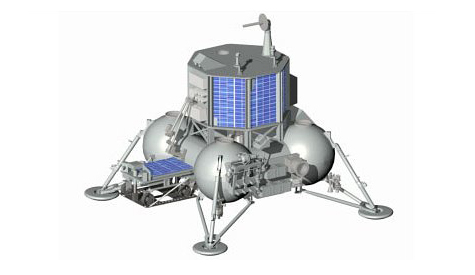
The International Lunar Observatory begins operations
The International Lunar Observatory (ILO) is a collaboration between two companies – Moon Express and the International Lunar Observatory Association. The project is both scientific and commercial. It places a telescope on Malapert Mountain, a 5 km (3.1 mi) crater rim at the Moon's southern pole. Its 2 m (6.6 ft) dish antenna can observe space without interference from Earth's atmosphere and is the first private instrument to conduct astrophysical studies and communications from the lunar surface.
The ILO features an internet-based access and control system, made available to researchers, educators and the general public. This is designed to promote a new model of "citizen science", public participation and international collaboration. In addition to capturing images of the Milky Way galaxy and deep space, it also takes photos of the lunar horizon and Earth.
A small rover is also deployed. This prospects for resources including metals, minerals and water, in the hope of locating deposits that could be extracted in the future. The ILO is preceded by a proof-of-concept mission known as the ILO-X, launched in 2015. This shoebox-sized device is followed by the much larger telescope and exploratory rover in 2016.*
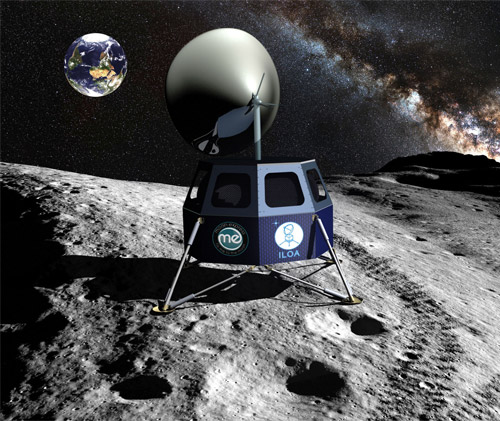
The first hotel in space
This year sees Russian space group, Energiya, launching the world's first space hotel in partnership with US firm Orbital Technologies.** Capable of housing up to seven people, it offers spectacular views of the Earth and includes a menu crafted by celebrity chefs. It also functions as a possible emergency refuge for astronauts from the International Space Station.
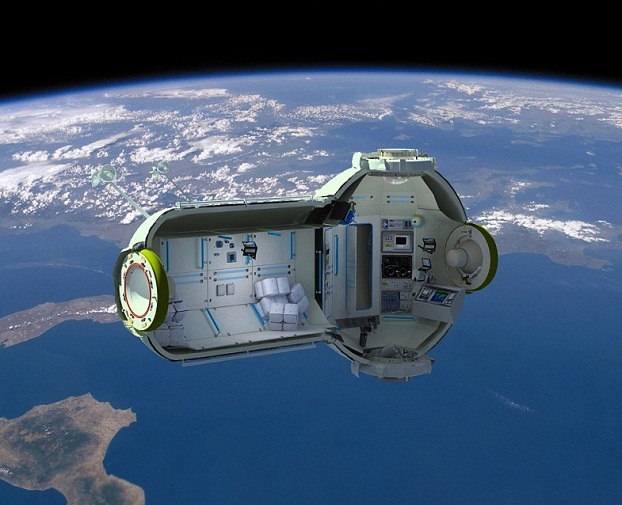
Balloon trips up to 20 miles high
World View Enterprises – a new startup company based in Arizona – begins offering suborbital flights in 2016,* using a capsule lifted by balloon up to 20 miles (32 km). Although some way short of the 62 miles (100 km) defined as "outer space", passengers are nevertheless treated to spectacular views of the Earth far below. Customers pay $75,000 each for a trip lasting four hours, with up to eight occupants able to walk freely inside. Safety mechanisms allow the balloon to glide safely back in the event of a malfunction.
InSight touches down on Mars
InSight is a probe launched by NASA to Mars, arriving in September 2016. The name stands for Interior Exploration using Seismic Investigations, Geodesy and Heat Transport. A stationary lander is placed on the surface of Mars, equipped with a seismometer and heat flow probe that drills 5 metres (16 ft) below ground – deeper than all previous arms, scoops, drills and probes. InSight's primary objective is to conduct an advanced study into the early geological processes that shaped Mars. The rocky inner planets share a common ancestry that began with a process called accretion. As each body increased in size, its interior heated up and evolved to become a terrestrial planet with a core, mantle and crust. Despite this common ancestry, each of the terrestrial planets was later shaped and molded through a poorly understood process called differentiation. InSight's goal is to improve understanding of this process. It will confirm whether Mars' core is solid or liquid, and determine why the crust is not divided into tectonic plates that drift like Earth's.*
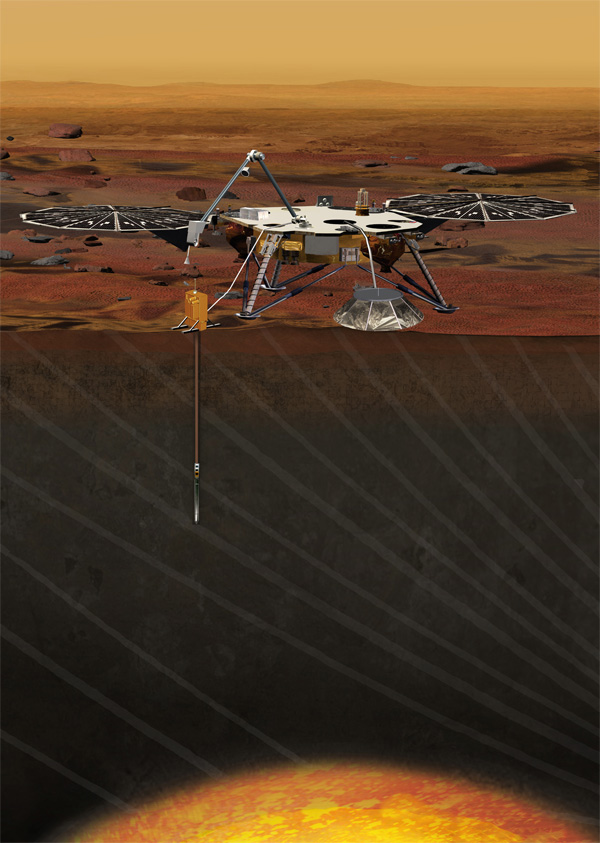
The Juno probe arrives at Jupiter
Launched in 2011, Juno becomes the second probe to orbit the gas giant, the first being Galileo in 1995. It is equipped with a camera, infrared and microwave radiometers, particle detectors, and an ultraviolet spectrometer. The mission objectives are:
- Determine precisely how much water is in Jupiter's atmosphere, to help confirm which planet formation theory is correct (or if new theories are needed).
- Look deep into Jupiter's atmosphere to gain a better understanding of its composition, cloud motions, temperature and other properties.
- Map Jupiter's magnetic and gravity fields – revealing its deep structure, core mass and overall dynamics, helping to further explain the planet's origin.
- Explore and study Jupiter's magnetosphere near the poles, especially the auroras – Jupiter's northern and southern lights – providing new insights into how the planet's enormous magnetic field affects its atmosphere.
Juno arrives at the planet in July 2016 and its mission concludes in October 2017, after a total of 33 orbits.* Like its predecessor, Galileo, it is crashed into the outer atmosphere of the gas giant, where it compresses and then melts as it falls.
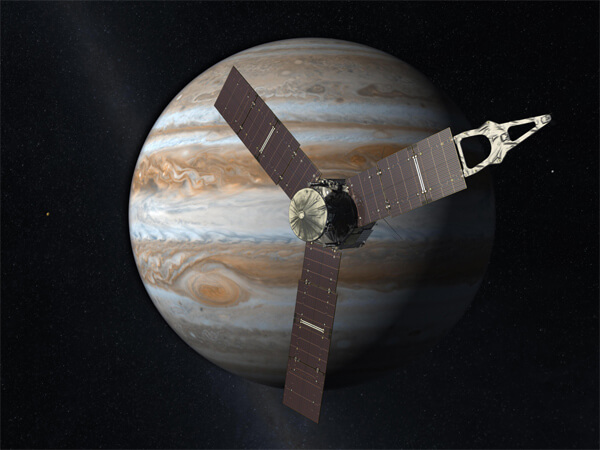
Credit: NASA/JPL
The world's largest single-aperture telescope is completed in China
The Five-hundred-metre Aperture Spherical radio Telescope (FAST) is a major new astronomical observatory built in Guizhou province, southwest China. Constructed between March 2011 and September 2016,* it becomes the largest single-aperture telescope in the world, half a kilometre wide and featuring a collecting area of 2.1 million sq ft (196,000 sq m). This dwarfs the next largest – the Arecibo Observatory in Puerto Rico – which had held the title since 1963.*The dish itself sits within a natural depression and is unable to move, due to its enormous size. However, the surface shape is changeable and the feed cabin (where radio waves are focused) can be moved around. This provides a viewing angle of up to 40° from the vertical.
FAST is able to gaze three times further into space and survey the skies ten times faster than Arecibo. Its primary roles include mapping the neutral hydrogen within the Milky Way at very high resolution, tripling the number of known pulsars from 2,000 to 6,000, and listening for possible signals from alien civilisations at distances of up to 1,000 light years; far more stars can be monitored than in previous surveys. FAST is the latest in a whole series of massive new telescopes being built around the world in the early 21st century, heralding a new era of astronomy.
Click to enlarge
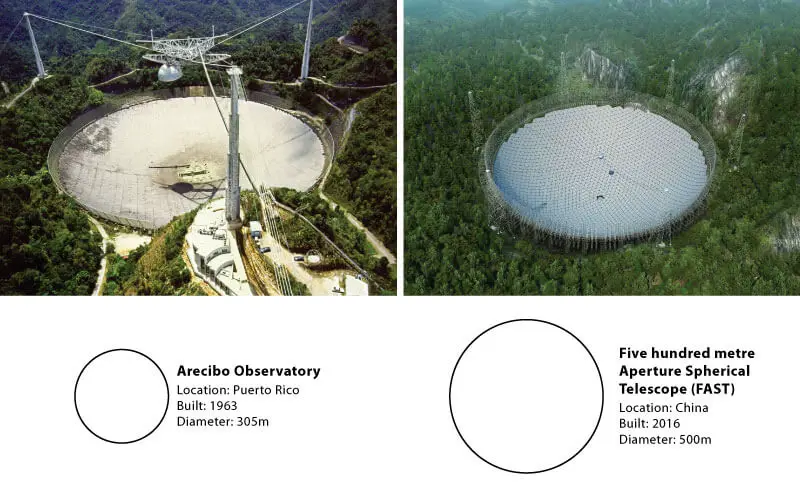
Credit: NASA / National Development and Reform Commission (NDRC) and the Chinese Academy of Sciences (CAS)
The mining industry is highly automated
Recent years have seen a rapid increase in the use of automation, a trend that is becoming especially prevalent in the mining sector. Rio Tinto, for example, now has a fleet of self-driving haul trucks which together are responsible for over half of its total material moved.** Codelco, meanwhile, has installed automated IT systems which now cover both its open pit mines along with all underground operations.* Wireless, intelligent devices are able to communicate with each other to monitor environmental conditions and to automate control of the mines' technological systems and equipment.
Self-driving vehicles, robotic drills, remote ship loading and other systems – despite their greater efficiency and improved safety – are now having a major impact on employment and economic activity. This is particularly true of Indigenous Australians in remote communities, for whom the mining industry has been their biggest employer. Some companies have promoted Aboriginal training, scholarships and business development, to provide the skills needed for new hi-tech jobs created by automation. However, the bulk of entry-level jobs are disappearing.*
As the use of robots and tele-operated machinery continues to increase, mining has begun to expand into new environments and locations that were previously off-limits to humans. This includes the seafloor, rich in metals like gold, copper, manganese, nickel and cobalt.** Longer term plans are being made to exploit asteroids.*
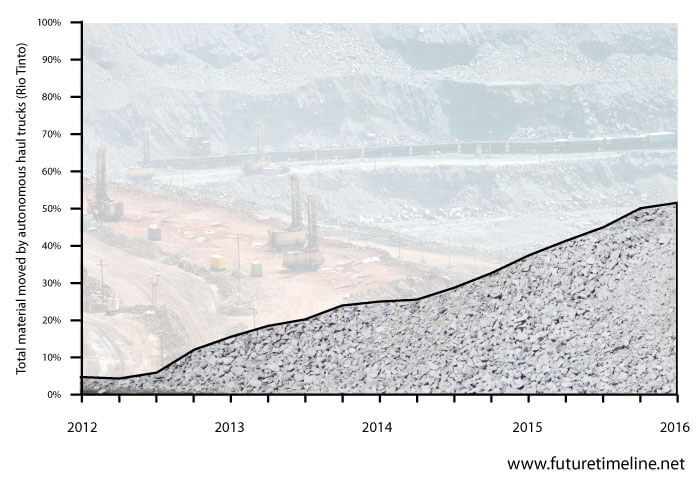
Agricultural robots are appearing on farms
Significant numbers of robots are now appearing on farms.* These have been in development for 20 years and are now cheap and sophisticated enough for mainstream use. New scanning and imaging technology has solved the problem of allowing robots to handle the varying shapes of individual fruits and vegetables. Their on-board computers can now differentiate between an object and its shadow and between green fruits, leaves and vines. This is accomplished using an array of cameras, each picking up a different spectrum of light and creating a perfect picture of the obstacles and topography in the robot's surrounding environment.*
Complex algorithms allow robotic workers to "learn" the longer they are on the job, so they become more adept as time goes on. This helps the computer to recognise a fruit that is partially covered by a leaf or similar obstruction, for example. The grasping tools themselves are based on human movements and are programmed to apply the correct pressure.
Advantages of this technology include much greater accuracy in spraying pesticides (cutting its use by 80%), uninterrupted output, and, as the technology improves, greater efficiency and speed. Initially, these robots are present on a small number of farms, often working alongside traditional human workers. As the years go by, however, and the technology proliferates, more and more farms begin to adopt robotic workers. By the 2020s, entire farms are becoming fully automated.*
The increased output helps to alleviate food shortages caused by rising global populations. Despite these gains, agricultural robots prove controversial. They exacerbate the ongoing unemployment crisis, with the potential of putting many thousands of workers out of a job. Mechanisation continues its unending progress, as yet another industry begins to be handed over to machines.
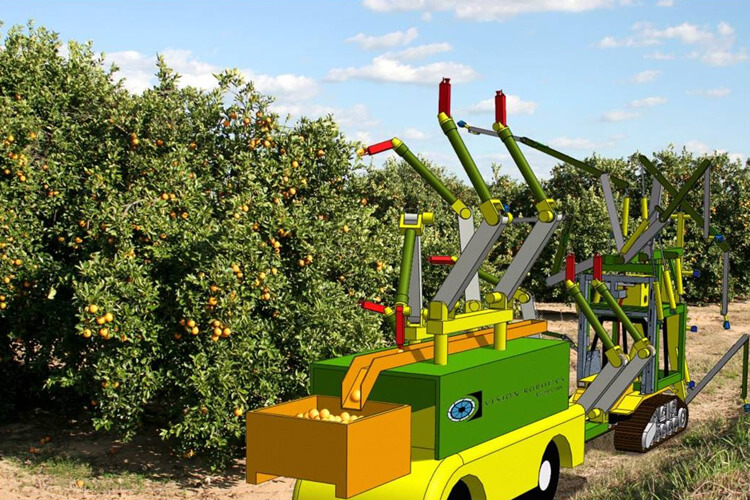
Credit: Vision Robotics Corporation
High-definition CCTV cameras are ubiquitous
Closed-circuit television (CCTV) has improved hugely in recent years with a shift from analogue to digital equipment. The vast majority of cameras now record footage in high definition, with some capable of gigapixel resolution. Although discouraging crime and helping to identify more offenders (made easier with facial recognition software), this mass proliferation of security is raising a number of privacy and civil liberties issues, due to a creeping sense of "Big Brother". For instance, governments are using them to keep tabs on people to stifle protest, free expression and assembly.* This is especially notable in the UK – a country renowned for its surveillance culture – with more CCTV cameras per capita than anywhere else on the planet, and where the average person is filmed over 300 times each day. In 2012, there were 1.85 million CCTV cameras in the UK, 129,000 of which were high definition. By 2016, there are 3.7 million HD cameras, a 29-fold increase.*
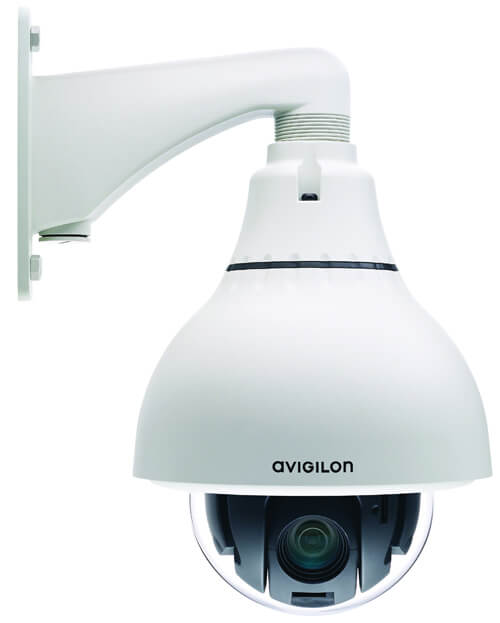
OLED displays are in widespread use
Having fallen greatly in cost, organic light-emitting diodes (OLED) are now available in a wide range of devices. These use less power than traditional LCDs whilst allowing sharper, thinner, brighter displays. They also eliminate the need for back lights. Sunlight that would normally "wash out" a display has no effect – the screens appear the same even in broad daylight, or when tilted at an angle.**
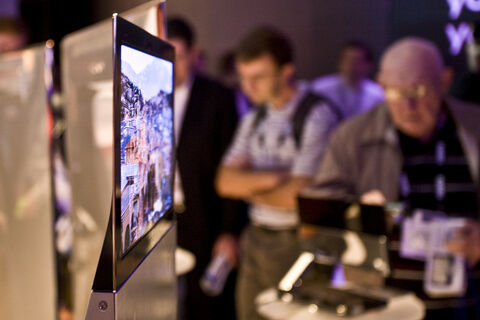
Three-person babies
A new method of IVF which involves the creation of babies with three parents has been introduced in the UK.* The controversial technique uses DNA from parents and combines it with healthy mitochondria from a female donor. This can prevent a rare, potentially fatal disease occurring that would normally cause a severe lack of energy, muscle weakness and in some cases heart failure. Although the baby has genetic material from three people, regulations state that for legal purposes it has two and the donor remains anonymous. A number of ethical concerns are raised by this landmark in IVF, but the treatment is shown to be safe. More advanced techniques will emerge in the decades ahead, leading to "designer babies" for the wealthy.*

New drug delivery methods for brain-related conditions
The main issue preventing effective treatments of many brain disorders had for years been the blood-brain barrier. This helps to protect the brain from dangerous bacteria, but it also blocks drugs from entering, prohibiting effective medical treatments. In 2011, however, a major breakthrough was made through controlled tests on mice. It was found that the body's own exosomes – tiny vesicles just 30-90 nanometres across, which are naturally used to carry material between cells – could be fused with genetic material and sent directly into the brain. A piece of genetic code, siRNA, was made to bypass the blood-brain barrier. Inside, the genetically modified exosomes succeeded in shutting off a gene, BACE1, which is involved in Alzheimer's disease.
This development opened the door to numerous advances in the treatment of brain-related conditions. It was also determined that the method could be used in other parts of the body, such as muscles, and could be specialised for an individual patient. Clinical trials begin this year, in which the method proves effective in humans. In the 2020s, radical new treatments for Alzheimer's, Parkinson's, brain tumours and other serious neurological conditions begin to appear on the market.*

A pill to prevent sunburn
In 2011, British researchers who analysed coral samples from the Great Barrier Reef made a remarkable discovery. Algae living within the coral were found to produce a special compound that was transported to the coral, then modified to protect both the algae and the coral from the sun's ultraviolet (UV) rays. Not only that, but fish feeding on the coral were also found to benefit, so it was clearly passed up the food chain.
After establishing how this compound was created and passed on, it was biosynthetically developed in a laboratory, creating a sunscreen for human use. Following tests conducted on skin samples, this is now available in tablet form and provides sun protection for the whole body.
Further research on this compound is underway, as it has the potential to create sun-tolerant plants that could boost world food supplies. Genetically engineering food crops to use the coral's biochemical pathways could make it possible to grow temperate crops, such as wheat and potatoes, at high yields in the tropics.*

Completion of the i5K project
i5K is a five year project to sequence the genomes of 5,000 insect and related arthropod species.* It aims to identify the vulnerable regions of insect DNA, which could then be targeted with pesticides and other treatments. This could reduce the $50 billion spent globally each year to control the many diseases transmitted by insects.
It could also aid the search for suitable compounds for use as pesticides: ones that kill a targeted pest, but leave the beneficial pollinating insects unharmed. This may help in reversing colony collapse disorder, for example, which has ravaged bee populations for decades. On current trends, honeybees had been expected to go extinct by 2035 – potentially resulting in global famine.* The project could also be useful in combatting malaria, one of the world's most common infectious diseases and responsible for 2.2% of all deaths globally.
The costs of genome sequencing have fallen exponentially in recent years – making it feasible to cheaply sequence huge numbers of animals and plants.**
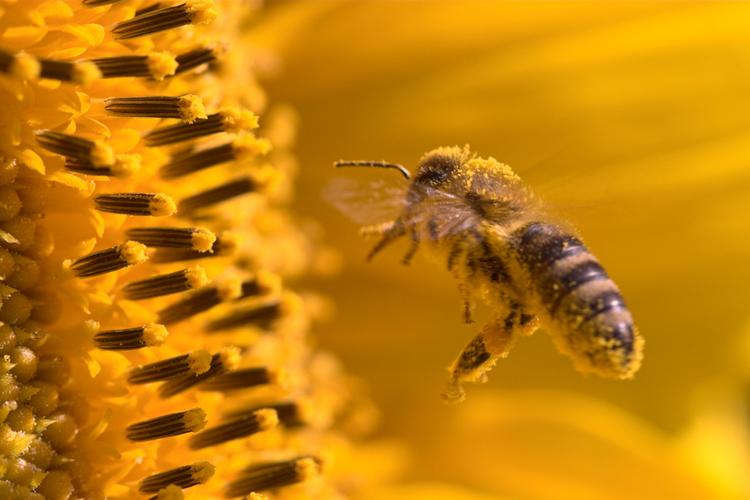
China completes the largest environmental cleanup in its history
The rapid growth of China in recent decades led to some truly appalling environmental conditions in the country, particularly the developing urban areas. Since 2006, China had been the world's largest producer of CO2, a result of coal power supplying 70% of the country's energy. Smog became a major problem in cities, with lung disease affecting many millions of their inhabitants. By 2011, 16 of the world's 20 most polluted cities were located in China, with Linfen, Shanxi Province the most polluted overall.* Numerous rivers and aquifers were endangered.*
To rectify these conditions, the Chinese government in 2011 began an ambitious Five Year Plan to stem the flow of pollutants and clean up the damage done.* A tax was applied to heavy polluters, based on the output of hazardous chemicals and sewage. The goal was to fix the situation caused by the previously unregulated industrial growth, which had first attracted the polluters to the country. The resultant revenue primarily went towards restoring damaged environments. Many non-profit groups aided in the cleanup during this time. New regulations were also introduced, putting a cap on energy use. Targets were set to lower carbon emissions significantly. This went along with China's long term goal of green energy dominance.
Though some progress has been made over this five year period, the entrenchment of dirty industry and the explosive growth of the country makes it very difficult to turn the environmental situation around. It will take decades of further work before China has transitioned to a truly green economy.

Polymer banknotes are introduced by the Bank of England
Until now, all banknotes in the UK were made from cotton fibre and linen rag. This made them susceptible to dirt and damage – five pound notes in particular, which lasted on average for just one year. In 2016, a new range of smaller, plastic banknotes enters circulation.* These are produced from a thin, transparent and flexible film made of polypropylene which offers a number of advantages:
• They are resistant to dirt and moisture, so stay cleaner for longer than paper banknotes.
• They are more secure than paper banknotes. They can incorporate advanced security features, making them more difficult to counterfeit. This includes a portion of the film left clear to form a "window" in the design.
• They are more durable. They last at least 2.5 times longer than traditional paper banknotes, so will take longer to become "tatty", improving the quality of banknotes in circulation. They can even survive being put into a washing machine by accident, for example.
In addition, they are more environmentally friendly and, because they last longer are, over time, cheaper than paper banknotes. Being thin and flexible, they fit into wallets and purses as easily as paper banknotes.
Modern polymer banknotes were first issued as currency by Australia in 1988 (coinciding with that country's Bicentenary year). By the early 2010s, around 20 other countries were using them.
US presidential election
The 58th US presidential election is held on Tuesday 8th November 2016. The incumbent president Obama is ineligible to be elected to a third term, due to term limits in the 22nd Amendment to the US Constitution.

The Gotthard Base Tunnel is completed
After 20 years of construction, the first trains are now running through Switzerland's Gotthard Base Tunnel.* With a route length of 57 km (35 mi) and a total of 152 km (94 mi) of tunnels, shafts and passages, it becomes the world's longest rail tunnel (though it will soon be surpassed by an even longer rail tunnel in China).
Running directly through the Alps mountain range, at depths of up to 2500m, it cuts the 3.5-hour travel time from Zürich to Milan by an hour, while the journey from Zürich to Lugano is reduced to one hour 40 minutes. Passenger trains operate as fast as 250 km/h (155 mph) through the new tunnels.

Các bài viết khác
- Hồ sơ mật Những người kiến tạo nước Mỹ Phần 1 (13.11.2015)
- MiG 35 Russia's Answer to the F 35 (13.11.2015)
- Sống để làm gì - TT. Thích Chân Quang (13.11.2015)
- Tổng hợp vũ khí hiện đại Việt Nam đã nhận 2015 (13.11.2015)
- Tu 160 ' White Swan '! Wings of Russia (13.11.2015)
- Video việc Trung Quốc đang xâm chiếm và xây dựng trái phép ở Biển Đông phần 2 (13.11.2015)
- VTC14 Tìm thấy dấu vết mới của sự sống trên sao Hỏa (13.11.2015)
- White swan TU 160 (13.11.2015)
- Wings of Russia. MiG-25 and MiG-31. Best In Class (1 of 2) (13.11.2015)
- Why Quantum Physics Ends the Free Will Debate (13.11.2015)
- Welcome to the 2030s Future Timeline Events 2030 2039 (13.11.2015)
- Welcome to the 2020s Future Timeline Events 2020 2029 (13.11.2015)
- Những hình ảnh từ Sao Hỏa khiến thế giới phải kinh hoàng (13.11.2015)
- Sáng chế robot thay con người làm việc nhàm chán, nguy hiểm (13.11.2015)
- Phỏng vấn Chủ tịch Hiệp hội Thủy sản Mỹ Nguồn VTV (13.11.2015)
- Robot vận tải của Thủy quân lục chiến Mỹ (13.11.2015)
- Xi Jinping: A 21st-century Mao? (13.11.2015)
- Worst Idea Ever: Dropping Nuclear Bombs During the Vietnam War (13.11.2015)
- Will South China Sea Dispute Lead to World War? (13.11.2015)
- Why the United States and Vietnam Urgently Need to Deepen Ties (13.11.2015)
- Why NAFTA passed and the Trans-Pacific Partnership failed (13.11.2015)
- What it will take for a head transplant to work (13.11.2015)
- What is civic capitalism? An interview with Colin Hay (13.11.2015)
- What China dangerously underestimates about America's interest in the South China Sea (13.11.2015)
- What Caused capitalism? (13.11.2015)
- Weaponized The "China Card" Makes Its Return to U.S. Politics (13.11.2015)
- We have heard that the Secretary General of the Vietnam Communist Party (13.11.2015)
- Vladimir Putin 2015 (13.11.2015)
- Vietnam Muddles China's South China Sea Challenge (13.11.2015)
- Vietnam 40 Years Later (13.11.2015)
- Việt Nam đang ngồi nhìn? (13.11.2015)
- Với TPP Việt Nam sẽ trở thành cường quốc hàng hải 2030 (13.11.2015)
- Vì sao căn hộ nhỏ ở đô thị đang là mốt? (13.11.2015)
- U.S. to Vietnam: Stop Hosting Putin’s Jets Please (13.11.2015)
- US to Press China on Island Expansions (13.11.2015)
- Turf wars Vietnam s land rights crisis (13.11.2015)
- Tuổi Già Hải Ngoại Và Niềm Vui Internet (13.11.2015)
- TƯ BẢN Thế kỷ XXI (13.11.2015)
- Trung Xô luận chiến công khai (13.11.2015)
- Trung Quốc cưỡng chiếm trái phép Hoàng Sa (13.11.2015)
- Vị thế của Mỹ đang bị thách thức (12.11.2015)
- Tranh giành Quyền lực và Hòa giải Dân tộc (12.11.2015)
- TPHCM: Nguồn cung căn hộ tăng mạnh trong quý 3/2015 (12.11.2015)
- Tinh dầu thông đỏ chữa ung thư: Thần dược hay lừa đảo (12.11.2015)
- Tiền vẫn đổ vào bất động sản Hà Nội (12.11.2015)
- Thời sự và suy ngẫm, số 97 (12.11.2015)
- Thế nào là tướng có phúc khí? (12.11.2015)
- The Bloodthirsty Deng We Didn’t Know (10.11.2015)
- Tình hình 2011 và Ba kịch bản cho thị trường bất động sản đến cuối năm (10.11.2015)
- SECRETARY KISSINGER (10.11.2015)
- PHỐ ĐÔNG VILLAGE BIỆT THỰ, NHÀ PHỐ TỐT NHẤT TP. HCM, KĐT (10.11.2015)
- TPHCM khai thác nhà xưởng cao tầng đầu tiên (10.11.2015)
- Ông chủ Sơn Kim Land: Kinh doanh căn hộ cao cấp cũng giống như ngành thời trang (10.11.2015)
- Áo dài người Việt (09.11.2015)
- Chủ tịch vương triều Tập có những điểm yếu của mình (09.11.2015)
- Những thế cờ Hoa Kỳ - Trung quốc (09.11.2015)
- Nhật đang đổ bộ đầu tư vào bất động sản Việt Nam (09.11.2015)
- NGƯỜI MÊ PHỞ NÓI CHUYỆN PHỞ...! (09.11.2015)
- Ngập lụt đô thị - phải làm gì bây giờ? (09.11.2015)
- Năm năm nhìn lại chuyên đề tiền tệ 2011 (09.11.2015)
- Doanh nghiệp bất động sản như ngồi trên lửa (09.11.2015)
- Mỹ so với Trung Quốc: Chiến tranh là không thể tránh khỏi, chỉ cần? (09.11.2015)
- MÙA ĐÔNG ĐẾN SỚM VÀ NHẬT BẢN VỀ ĐÊM (09.11.2015)
- MUA BÁN NHÀ KHÔNG THÀNH XỬ LÍ RA SAO? (09.11.2015)
- 'Khó thay đổi lớn về chính trị ở VN' (09.11.2015)
- Hiểm họa Trung Quốc và bài học từ Tiệp Khắc, Ukraina (09.11.2015)
- Giá bất động sản - sự phi lý trong cái hợp lý (09.11.2015)
- Giá bán căn hộ tại TPHCM và Hà Nội quý 4/2015 vẫn khó (09.11.2015)
- Về giải quyết tranh chấp, khiếu nại, tố cáo về đất đai (09.11.2015)
- Dự báo 20 năm ( 2014-2034) (09.11.2015)
- Dự án Đảo Kim Cương đã bán được hơn 60% căn hộ (09.11.2015)
- Doanh nghiệp bất động sản như ngồi trên lửa (09.11.2015)
- Col Liu Mingfu on the U.S. and China as Rivals (09.11.2015)
- Chuẩn bị chiến tranh với Trung Quốc (09.11.2015)
- Chủ quyền Hoàng Sa – Trường Sa? (09.11.2015)
- Chủ nghĩa tư bản và khủng hoảng tài chánh toàn cầu Vietsciences- Nguyễn Trường (09.11.2015)
- China Stands by Its Claims Over South China Sea Reefs (09.11.2015)
- China’s South China Sea strategy: simply brilliant (09.11.2015)
- Can China Be Contained? (09.11.2015)
- Bong bóng bất động sản rất dễ xảy ra? (09.11.2015)
- Bill Gates: Nếu bạn nghĩ giáo viên của mình quá khó tính, bạn sẽ gặp trở ngại với cấp trên sau này (09.11.2015)
- BĐS dành cho nhà giàu bước vào cuộc đua mới (09.11.2015)
- Bào Chữa Vụ Án Lập quỹ trái phép phép tại Nông trường Sông Hậu (09.11.2015)
- Bài thuốc Minh Mạng thang gồm 22 vị (09.11.2015)
- Bài thuốc chống suy nhược từ linh chi (09.11.2015)
- Ảo Vọng Mùa Thu (09.11.2015)
- 2014Thị trường bất động sản đã trải qua nhiều thăng trầm (09.11.2015)
- 16 trường đại học đẹp nhất trên thế giới (09.11.2015)
- 7 tuần lễ sau khi thành đạo (08.11.2015)
- Chuyên đề Mỹ áp sát các đảo cát do Trung Quốc xây bất hợp pháp ở Biển Đông (28.10.2015)
- AFTER THE FALL OF SAIGON (27.10.2015)
- What Caused Capitalism? (27.10.2015)
- Cơ Hội Lớn Cho “Bánh Mì” Việt Nam (25.10.2015)
- HỒI KÝ TỪ TUỔI NGỦ THẬP ĐẾN THẤT THẬP CỦA PHẬT TỬ NGUYỄN KIM TOÀN (24.10.2015)
- Nhật Bản - Đất nước - Con người (08.10.2015)
- Nhạc không lời êm đềm du dương hay nhất sốt mọi thời đại Toinoi com (08.10.2015)
- Westlife When You Tell Me That You Love Me Wit (08.10.2015)
- Rachael Yamagata Over And Over Lyrics (08.10.2015)
- Over and Over Nana Mouskouri lyrics (08.10.2015)
- HD Chuc Xuan Ban AVT (08.10.2015)
- Nana Mouskouri Love Story (08.10.2015)
- John Legend - Tonight (Best You Ever Had) feat. Ludacris (08.10.2015)
- 1000 cụm từ tiếng anh thông dụng nhất hay sử dụng hàng ngày full (08.10.2015)
- LOVE STORY With Lyrics = ENGELBERT HUMPERDINCK (08.10.2015)
- LOVE STORY Where Do I Begin Andy Williams Ly (08.10.2015)
- Liệu có xảy ra xung đột quân sự ở Biển Đông (08.10.2015)
- Andy Williams, 20 Greatest Songs Hits with Lyrics 1 of 2 (08.10.2015)
- Full 5 Bước Để Nói Một Ngoại Ngữ YouTube (08.10.2015)
- Elton John SACRIFICE Lyrics HQ (08.10.2015)
- Ban kích động nhạc Số Dzách & AVT Thập niên 60 (08.10.2015)
- Creed My Sacrifice With Lyrics (08.10.2015)
- Ban AVT Chúc tết hải ngoại Clip giải trí hài kị (08.10.2015)
- Amazing Grace Best Version By Far! (08.10.2015)
- Amazing Grace Lyrics (08.10.2015)
- { Nana Mouskouri } Love Story (08.10.2015)
- 27 năm sự kiện Trung Quốc tấn chiếm Gạc Ma (08.10.2015)
- Hồ sơ mật Những người kiến tạo nước Mỹ Phần 1 (08.10.2015)
- Học qua bài hát (08.10.2015)
- Phát âm tiếng anh - Mr Kenny Ng (08.10.2015)
- Quan hệ Việt-Mỹ và thế cân bằng trong quan hệ với các siêu cường (08.10.2015)
- QUY HOẠCH SÀI GÒN TRƯỚC 1975 DƯỚI ẢNH HƯỞNG CỦA HOA KỲ (08.10.2015)
- Quyền lực dầu đá phiến Mỹ: Đòn khí đốt Nga vô hiệu (08.10.2015)
- Rối loạn kinh tế TQ và ảnh hưởng tới VN (08.10.2015)
- Sáu vấn đề đằng sau vụ chứng khoán TQ (08.10.2015)
- Tập Cận Bình (08.10.2015)
- Tham vọng quyền lực và sự tha hóa (08.10.2015)
- Thế chiến II: trại tù kinh hoàng của quân Nhật (08.10.2015)
- Thế giới không còn phẳng nữa rồi? (08.10.2015)
- Thế lưỡng nan của Hoàng đế Tập Cận Bình (08.10.2015)
- Lần theo dấu chân Người trên đất Mỹ - Bài 3: Bác Hồ ở Boston (08.10.2015)
- THUYẾT "LÃNH ĐẠO TỪ PHÍA SAU" HAY TRÒ "XUỴT CHÓ BỤI RẬM" (08.10.2015)
- Tìm lối ra cho kinh tế Việt Nam - Kỳ 12: Tái cơ cấu một cách đồng bộ (08.10.2015)
- Toàn văn chiến lược quân sự mới của Mỹ (08.10.2015)
- Tôi thực sự choáng trước dự thảo ‘sặc mùi Mỹ’ (08.10.2015)
- Tỷ phú số một Hồng Kông lặng lẽ rút khỏi Trung Quốc (08.10.2015)
- Vấn nạn Giáo dục Nguyên nhân và Hậu quả - Nguyễn Quang Dy (08.10.2015)
- (08.10.2015)
- Những điều lạ trong dự báo thế giới 100 năm tới - NGUYỄN HẢI HOÀNH (08.10.2015)
- Nhật Bản: ‘Thuế ở VN phức tạp, mất thì giờ’ (08.10.2015)
- Người dựng kỳ đài Ngày Độc lập 2/9 (08.10.2015)
- Nắm hàng triệu ha đất, nộp ngân sách không bằng một nhà máy (08.10.2015)
- Mỹ-Hoa và chiến lược dài hạn tại Thái Bình Dương (08.10.2015)
- Một số vấn đề kinh tế Trung Quốc đang đối mặt (08.10.2015)
- Li Ka Shing, tỷ phú "siêu nhân" (08.10.2015)
- Lá thư viết vào năm 2070... (08.10.2015)
- Lá thư để lại giữa rừng (08.10.2015)
- Kinh tế TQ qua các con số chóng mặt (08.10.2015)
- Hệ thống tài chính Việt Nam bị đánh giá rủi ro ở mức (08.10.2015)
- Hai mươi năm bức thư của cố Thủ tướng Võ văn Kiệt (08.10.2015)
- ĐỪNG CÓ DẠI, ĐẢNG CSVN KHÔNG QUÊN "CHUYÊN CHÍNH VÔ SẢN" ĐÂU. (08.10.2015)
- Ðời là bể khổ....Qua được bể khổ... là qua đời ! (08.10.2015)
- ĐỌC LẠI HỒI KÝ TRẦN QUANG CƠ (08.10.2015)
- Định nghĩa mới về kinh tế thị trường XHCN (08.10.2015)
- Diễn Văn Của Đức Giáo Hoàng Phanxicô tại Bolivia với Các Phong Trào Bình Dân (08.10.2015)
- Đảng CS lấy ý kiến về báo cáo chính trị (08.10.2015)
- Vấn nạn lớn nhất của Obama trong việc thúc đẩy TPP (08.10.2015)
- Việt Nam có thể trở thành một trong cửu bá trong thế giới đa cực vào năm 2025 (08.10.2015)
- Hệ thống ngân hàng (08.10.2015)
- The root of China's economic troubles? It's politics, stupid (08.10.2015)
- The Meaning of Kissinger (08.10.2015)
- henry Kissinger was 26 years old when he wrote a nearly 400 (08.10.2015)
- Interview With Chinese President Xi Jinping WALL STREET JOURNAL (08.10.2015)
- Đại sứ Lê Văn Bàng: Sự tham gia của Nhật sẽ tạo thế cân bằng ở Biển Đông (08.10.2015)
- Có hay không sự tồn tại của 'vùng cấm chính trị'? (08.10.2015)
- China’s risky money game (08.10.2015)
- Cải cách kinh tế thúc đẩy thay đổi thể chế (08.10.2015)
- Bức tranh toàn diện về xử lý nợ xấu ngân hàng từ 2010 đến tháng 8/2015 (08.10.2015)
- Báo cáo 2035: VN bị thách thức về kinh tế, dồn ép về xã hội (08.10.2015)
- Bài học dạy con làm nức lòng dân mạng của MC Nguyễn Cao Kỳ Duyên (08.10.2015)
- Dreams of Empire - PETER BERGER (08.10.2015)
- Việt nam trở thành công xưởng sản xuất khổng lồ của thế giới (08.10.2015)
- CURRENT HISTORY • September 2015 (08.10.2015)
- Bác Hồ đã chọn đúng những vị trí lãnh đạo (08.10.2015)
- Ba lý do khiến FED giữ nguyên lãi suất (08.10.2015)
- 2015.09-Gerwin_TPP-and-the-Benefits-of-Freer-Trade-for-Vietnam (08.10.2015)
- 16 trường đại học đẹp nhất trên thế giới (08.10.2015)
- 9 thứ người giàu nghĩ và hành động khác người nghèo (08.10.2015)
- 8 năm gia nhập WTO: “Nghịch lý” và “lỗi hệ thống” (08.10.2015)
- ASEAN must choose between China, US and a third way (08.10.2015)
- Pentagon Papers (08.10.2015)
- KHỦNG HOẢNG TÀI CHÍNH TOÀN CẦU VÀ NHỮNG TÁC ĐỘNG ĐẾN VIỆT NAM: NHÌN TỪ GÓC ĐỘ NGÂN HÀNG VÀ CHỨNG KHOÁN (08.10.2015)
- “Mua” và “mượn” nhân lực ra sao? (08.10.2015)
- Vietnam defies emerging market slowdown (08.10.2015)
- Vietnams rising repression (08.10.2015)
- Ba trong số những hòn đảo là điểm đến được dân du lịch trẻ nhắc nhiều nhất trong năm nay phải kể đến đảo Lý Sơn (08.10.2015)
- Cận cảnh nơi an nghỉ của đại gia giàu nhất Sài Gòn xưa bên trong nhà thờ Huyện Sĩ (08.10.2015)
- Không để tiền lại cho con (08.10.2015)
- VE VÀ KIẾN (08.10.2015)
- Lá thư viết vào năm 2070... (08.10.2015)
- Người mang bí số TQ2 (08.10.2015)
- Những tấm ảnh để đời chụp những ngày Sài Gòn giải phóng (08.10.2015)
- Làm kinh tế theo lời Phật dạy (08.10.2015)
- Samurai: Một thời kiếm sỹ huyền thoại (08.10.2015)
- Tài tử, giai nhân ngày ấy bây giờ - NSƯT Nguyễn Chánh Tín bán nước đóng chai, mở quán nhậu sống qua ngày (08.10.2015)
- Trịnh Công Sơn tiên cảm về hòa bình, hòa giải và tự do (08.10.2015)
- Về hưu như chết lâm sàng (08.10.2015)
- Vũ trụ sẽ diệt vong như thế nào? (08.10.2015)
- Bài bào chữa Phúc Thẩm (08.10.2015)
- BAI BIEN MINH GỞI VIỆN KS TỐI CAO (08.10.2015)
- Bài biên minh vụ án sản xuất làm giả phân bón gởi bo trưởng bộ congan (08.10.2015)
- Các Quyết định giám đốc thẩm về các tranh chấp liên quan đến thừa kế (08.10.2015)
- CHUYÊN ĐỀ Biện pháp khẩn cấp tạm thời trong tố tụng dân sự (08.10.2015)
- Đề cương bài giảng Luật Tố tụng hình sự (08.10.2015)
- Đơn khiếu này vụ án Tân Uyên (08.10.2015)
- Đơn khiếu nại Phan Thị Trước gửi ỦY BAN NHÂN DÂN THỊ TRẤN TẦM VU (08.10.2015)
- Đơn Kiến nghị Giám đốc Thẩm vụ án dân sự Vicẩm Tú -seoun Tai bai (08.10.2015)
- Đơn khởi kiện Chia di sản long an (08.10.2015)
- Luật đứng về phía con nợ chây ì (08.10.2015)
- Lực lượng thực thi pháp luật chưa nghiêm, tăng mức phạt giải quyết được gì? (08.10.2015)
- 10 loại cây hút khí độc trong nhà cực tốt (08.10.2015)
- Cập nhật phương pháp điều trị suy thận mạn tính (08.10.2015)
- Chữa suy tim (08.10.2015)
- Dược thiện dành cho người bị thiếu máu (08.10.2015)
- Cựu Tổng thống Mỹ Jimmy Carter bị ung thư (08.10.2015)
- Đau nửa đầu bên trái, dấu hiệu bệnh gì? (08.10.2015)
- Điều trị thiếu máu do suy thận mạn thế nào (08.10.2015)
- Dù đã bước vào tuổi 100 (08.10.2015)
- Ghép tế bào gốc cuộc cách mạng” trong điều trị bệnh lý về máu (08.10.2015)
- Già Sao Cho Sướng! (08.10.2015)
- Những điều cần biết về bệnh suy tủy (08.10.2015)
- Khi bạn qua tuổi 65, hãy hưởng thụ những gì mình yêu thích… (08.10.2015)
- Nhiều người Mỹ không muốn sống hơn 100 tuổi (08.10.2015)
- Thang Thuốc Trường Thọ từ dân gian Trung Hoa (08.10.2015)
- THIẾU MÁU (08.10.2015)
- Thủ tướng Singapore bàn về Biển Đông tại trường đảng của Trung Quốc (08.10.2015)
- Việt Nam cần học gì từ quân sự Nhật? (08.10.2015)
- Will China crash? (08.10.2015)
- The Truth About US Freedom of Navigation Patrols in the South China Sea (08.10.2015)
- Tàu sân bay Mỹ sắp hết thời ? (08.10.2015)
- Nhật sẽ cấp thêm tàu cho Việt Nam (08.10.2015)
- Ngày này tháng 1/ 1974: Kissinger và vụ Hoàng Sa! (08.10.2015)
- China's Meltdown Goes Deeper Than the Stock Market (08.10.2015)
- China's FakeIslands in the South China Sea: What Should America Do? (08.10.2015)
- BÀI VIẾT PHÂN TÍCH Chiến tranh với Trung Quốc (08.10.2015)
- ASEAN must choose between China, US and a third way (08.10.2015)
- 10 lý do khiến Trung Quốc gặp khó khăn trong chiến tranh hiện đại (08.10.2015)
- Thủ Thiêm gần hết đất để phát triển khu dân cư (08.10.2015)
- Sức sống của cát (08.10.2015)
- Trung Quốc: “Bệnh đô thị” ngày càng lây lan (08.10.2015)
- Dự Đoán Địa ốc 2007-2015 (08.10.2015)
- Doanh nghiệp bất động sản Tp Hồ Chí Minh (08.10.2015)
- Chuyên đề tiền vào bất động sản 2015 (08.10.2015)
- Chuyên đề Bất động sản 2015 bắt đầu cho đợt sóng lớn năm năm bền vững ?!!! (08.10.2015)
- ‘Của để đời’ của những đại gia lạ trong giới BĐS (08.10.2015)
- Già ơi, Chào Mi! (04.09.2015)
- Làm thế nào để giảm nguy cơ tai biến mạch máu não ở phụ nữ (04.09.2015)
- Những cái cũ & xưa nhất của Saigon (27.08.2015)
- Nguyên Nhân Thành Công Của Những Người gốc Do Thái ??? (27.08.2015)
- HÌNH ẢNH SAIGON qua máy ảnh người nước ngoài (27.08.2015)
- Một khúc ca xuân! (Tố Hữu) (27.08.2015)
- 10 câu hỏi dành cho nhà vật lý lỗi lạc nhất hiện nay, Stephen Hawking (27.08.2015)
- Bí ẩn tuyệt tự của 3 đời vua cuối cùng nhà Thanh (27.08.2015)
- TRỜI PHẬT DẠY VỀ THỜI GIAN - NGHIỆP BÁO (27.08.2015)
- ĐẮNG VÀ NGỌT (27.08.2015)
- Thư giãn với những hình ảnh đẹp của thiên nhiên (27.08.2015)
- Bài thơ Vấn thoại của Hồ Chí Minh và vụ án oan của ông Nguyễn Thanh Chấn – trandinhsu P2 (27.08.2015)
- Vui trồng hoa thay vì buồn nhổ cỏ (27.08.2015)
- Khám phá Ðèo Ngang (27.08.2015)
- Bài thơ : “Vội” (27.08.2015)
- A Tribute to the Dog - bài diễn văn bất hủ ngợi ca con chó (27.08.2015)
- Cõi già trên Đất Lạ (27.08.2015)
- Thiền và kinh tế học "Thủy tự mang mang hoa tự hồng (27.08.2015)
- Cha con cạn tình (27.08.2015)
- Cha, con và miếng đất (27.08.2015)
- trước cau sau chuối (27.08.2015)
- Điên Vì Đàn Bà (27.08.2015)
- Anh xin thề (27.08.2015)
- Ai ? (27.08.2015)
- Phút thật lòng (27.08.2015)
- Vợ nghĩ gì về chồng (27.08.2015)
- Thời @ (27.08.2015)
- Ba con quỷ (27.08.2015)
- Đỉnh cao đối đáp (27.08.2015)
- Trung Quốc và thế giới (27.08.2015)
- Trung Quốc trắng trợn lộ kế hoạch đánh chiếm đảo thuộc Trường Sa năm 2014 (27.08.2015)
- Thẩm định về ” Thế Kỷ Trung Quốc ?” (27.08.2015)
- Mỹ đang giữ liên lạc chặt chẽ với Việt Nam về vụ giàn khoan Trung Quốc (27.08.2015)
- Mỹ: Trung Quốc phải làm rõ tuyên bố chủ quyền Biển Đông theo UNCLOS (27.08.2015)
- Liệu có xảy ra chiến tranh tại Biển Đông? (27.08.2015)
- Kiện TQ, cơ hội thắng của Việt Nam đến đâu? (27.08.2015)
- Kiềm chế, đối thoại và tuân thủ luật pháp quốc tế (27.08.2015)
- Giàn khoan Hải Dương 981 vướng núi đá ngầm Việt Nam (27.08.2015)
- Giàn khoan Hải Dương 981 “vào giai đoạn hai” (27.08.2015)
- Giải mã tín hiệu chiến tranh của Trung Quốc - Kỳ 3 (27.08.2015)
- ĐÃ ĐẾN LÚC VIỆT NAM PHẢI QUYẾT ĐỊNH! (27.08.2015)
- Biển Đông: Thế trận mới đang hình thành (27.08.2015)
- Đương đầu với thách thức từ Trung Quốc (27.08.2015)
- Đội Hoàng Sa và bí mật quân lương (27.08.2015)
- Bộ trưởng Quốc phòng Việt Nam, Đại tướng Phùng Quang Thanh, vừa có chuyến thăm chính thức Hoa Kỳ. (27.08.2015)
- Mạ Lê Thị A (27.08.2015)
- 49 điều cha dạy con 2014 (27.08.2015)
- Bà mẹ Việt Nam (27.08.2015)
- Nhật ký ông Nội phần 3 (27.08.2015)
- Hồi ký Ông nội -phần 2 (27.08.2015)
- Hồi ký Ông nội -phần 1 (27.08.2015)
- Bình luận khoa học hình sự tập 10 (27.08.2015)
- Bình luận khoa học hình sự tập 9 (27.08.2015)
- Bình luận khoa học hình sự tập 8 (27.08.2015)
- Bình luận khoa học hình sự tập 6 (27.08.2015)
- Bình luận khoa học hình sự tập 5 (27.08.2015)
- Bình luận khoa học hình sự tập 4 (27.08.2015)
- Bình luận khoa học hình sự tập 3 (27.08.2015)
- Bình luận khoa học hình sự tập 2 (27.08.2015)
- Bình luận khoa học hình sự tập 1 (27.08.2015)
- Bình luận khoa học hình sự tập 1 (26.08.2015)
- Luật dân sự 2005 (26.08.2015)
- Đơn khởi kiện đòi nợ vay (26.08.2015)
- ĐƠN YÊU CẦU GIẢI QUYẾT KHIẾU NẠI (26.08.2015)
- Bàn về xác minh điều kiện thi hành án (26.08.2015)
- Nghị Định 84-2007-CP giấy quyền SD đất (26.08.2015)
- Nghị Định 84-2007-CP giấy quyền SD đất (26.08.2015)
- GIẢI QUYẾT CÁC TRANH CHẤP LIÊN QUAN ĐẾN QUYỀN SỬ DỤNG ĐẤT TẠI TOÀ ÁN NHÂN DÂN (26.08.2015)
- THÔNG TƯ 70 BỘ CÔNG AN QUY ĐỊNH CHI TIẾT THI HÀNH CÁC QUY ĐỊNH CỦA BỘ LUẬT TỐ TỤNG HÌNH SỰ LIÊN QUAN ĐẾN VIỆC BẢO ĐẢM QUYỀN BÀO CHỮA TRONG GIAI ĐOẠN ĐIỀU TRA VỤ ÁN HÌNH SỰ (26.08.2015)
- Nghị định xử phạt hành chính trong lĩnh vực tư pháp có hiệu lực từ ngày 18-9: (26.08.2015)
- Nghị quyết của Hội đồng Thẩm phán Tòa án nhân dân tối cao số 02/2004/QĐ-HĐTP ngày 10-8-2004 hướng dẫn áp dụng pháp luật trong việc giải quyết các vụ án dân sự, hôn nhân và gia đình (26.08.2015)
- Luật Thương mại 2005 (26.08.2015)
- Luật Doanh Nghiệp năm 2005 (26.08.2015)
- Nghị Định 14/2007/NĐ-CP (26.08.2015)
- Luật quy định về hoạt động chào bán chứng khoán ra công chúng, niêm yết, giao dịch, kinh doanh, đầu tư chứng khoán, dịch vụ về chứng khoán và thị trường chứng khoán. (26.08.2015)
- luật dân sự (26.08.2015)
- NGHỊ ĐỊNH 121/2007/NĐ-CP (26.08.2015)
- THÔNG TƯ 59/2007/TT-BTC (26.08.2015)
- THÔNG TƯ 61/2007/TT-BTC (26.08.2015)
- NGHỊ ĐỊNH 35/2006/NĐ-CP (26.08.2015)
- NGHỊ ĐỊNH 59/2006/NĐ-CP (26.08.2015)
- NGHỊ ĐỊNH 158/2006/NĐ-CP (26.08.2015)
- NGHỊ ĐỊNH 52/2006/NĐ-CP (26.08.2015)
- THÔNG TƯ 09/2007/TT-BTM (26.08.2015)
- LUẬT NGƯỜI LAO ĐỘNG VIỆT NAM ĐI LÀM VIỆC Ở NƯỚC NGOÀI THEO HỢP ĐỒNG (26.08.2015)
- LUẬT SỬA ĐỔI, BỔ SUNG MỘT SỐ ĐIỀU CỦA BỘ LUẬT LAO ĐỘNG (26.08.2015)
- NGHỊ ĐỊNH 133/2007/NĐ-CP (26.08.2015)
- THÔNG TƯ 38/2007/TT-BTCTHÔNG TƯ 17/2007/TT-BTC (26.08.2015)
- NGHỊ ĐỊNH 140/2007/NĐ-CPNGHỊ ĐỊNH 139/2007/NĐ-CP (26.08.2015)
- Quy trình cấp giấy phép xây dựng (26.08.2015)
- NGHỊ QUYẾT 48/2007CP-NĐ (26.08.2015)
- BỘ LUẬT DÂN SỰ (26.08.2015)
- Quy định chi tiết thi hành các quy định của Bộ luật dân sự (26.08.2015)
- NGHỊ ĐỊNH 126/2007/NĐ-CP (26.08.2015)
- THÔNG TƯ 17/2007/TT-BTC (26.08.2015)
- THÔNG TƯ 38/2007/TT-BTC (26.08.2015)
- PHÁP LỆNH THỪA KẾ (26.08.2015)
- NGHỊ ĐỊNH 139/2007/NĐ-CP (26.08.2015)
- NGHỊ ĐỊNH 140/2007/NĐ-CP (26.08.2015)
- Quy trình cấp giấy phép xây dựng (26.08.2015)
- NGHỊ QUYẾT 48/2007CP-NĐ (26.08.2015)
- BỘ LUẬT DÂN SỰ (26.08.2015)
- Quy định chi tiết thi hành các quy định của Bộ luật dân sự (26.08.2015)
- Quy định chi tiết thi hành Luật Thuế thu nhập doanh nghiệp (26.08.2015)
- Quy định chi tiết thi hành một số điều của Luật Quản lý thuế (26.08.2015)
- LUẬT KINH DOANH BẤT ĐỘNG SẢN (26.08.2015)
- THONG TU 59 NAM 2004 (26.08.2015)
- NGHI DINH 100 NAM 2006 (26.08.2015)
- Luật Sở Hữu Trí Tuệ (26.08.2015)
- NGHI DINH 70 NÁM997 (26.08.2015)
- NGHI DINH 142 NAM 2005 (26.08.2015)
- QUYẾT ĐỊNH 54 NĂM 2007 (26.08.2015)
- NGHI DINH 123 NAM 2007 (26.08.2015)
- NGHI DINH 90 NAM 2006 (26.08.2015)
- NGHI DINH 84 NAM 2007 (26.08.2015)
- luật đất đai (26.08.2015)
- LUẬT CƯ TRÚ (26.08.2015)
- LUẬT QUẢN LÝ THUẾ (26.08.2015)
- NGHỊ ĐỊNH CỦA CHÍNH PHỦ SỐ 103/2006/NĐ-CP NGÀY 22 THÁNG 9 NĂM 2006 (26.08.2015)
- NGHỊ ĐỊNH CỦA CHÍNH PHỦ SỐ 36/2007/NĐ-CP NGÀY 08 THÁNG 3 NĂM 2007 VỀ XỬ PHẠT VI PHẠM HÀNH CHÍNH TRONG LĨNH VỰC CHỨNG KHOÁN (26.08.2015)
- NGHỊ ĐỊNH 163/2006/NĐ-CP ngày 29 tháng 12 năm 2006 quy dịnh về đăng ký giao dịch bảo đảm. (26.08.2015)
- những câu hỏi thường gặp (26.08.2015)
- Cấp thẻ APEC cho doanh nhân VN (26.08.2015)
- CỘNG HOÀ XÃ HỘI CHỦ NGHĨA VIỆT NAM Độc lập - Tự do - Hạnh phúc ------------------------- GIẤY ĐỀ NGHỊ ĐĂNG KÝ KINH DOANH CÔNG TY HỢP DANH Kính gửi: Phòng đăng ký kinh doanh................................................. (26.08.2015)
- GIẤY ĐỀ NGHỊ ĐĂNG KÝ KINH DOANH CÔNG TY HỢP DANH (26.08.2015)
- DANH SÁCH CÁC THÀNH VIÊN CÔNG TY HỢP DANH (26.08.2015)
- HƯỚNG DẪN XÂY DỰNG ĐIỀU LỆ CÔNG TY HỢP DANH (26.08.2015)
- DANH SÁCH CÁC THÀNH VIÊN CÔNG TY TRÁCH NHIỆM HỮU HẠN CÓ (26.08.2015)
- ĐIỀU LỆ CÔNG TY TNHH CÓ HAI THÀNH VIÊN TRỞ LÊN (26.08.2015)
- HƯỚNG DẪN SOẠN THẢO DANH SÁCH CỔ ĐÔNG SÁNG LẬP CÔNG TY CỔ PHẦN (26.08.2015)
- GIẤY ĐỀ NGHỊ ĐĂNG KÝ KINH DOANH (26.08.2015)
- HƯỚNG DẪN ĐIỀU LỆ CÔNG TY CỔ PHẦN THEO QUY ĐỊNH LUẬT DOANH NGHIỆP 2005 (26.08.2015)
- 10 cổ phiếu giá bèo khởi sắc nhất sàn (26.08.2015)
- Qũy PXP Vietnam: "Chúng ta đang ở giai đoạn đầu của thị trường bò tót" (26.08.2015)
- 5 sai lầm của các nhà đầu tư chứng khoán Việt Nam (26.08.2015)
- 10 BÍ QUYẾT LÀM GIÀU CỦA WARREN BUFFETTY PHÚ GIÀU NHẤT THẾ GIỚI (26.08.2015)
- “Vô tư” hủy lệnh giữa phiên (26.08.2015)
- Công ty chứng khoán chưa chuyên nghiệp! (26.08.2015)
- Nhà đầu tư cần biết (26.08.2015)
- có sốt chứng khoán cuối năm (26.08.2015)
- Phát hành thêm = mua cổ phiếu giá rẻ? (26.08.2015)
- 100 người giàu nhất Việt Nam trên sàn chứng khoán (26.08.2015)
- Dự báo TTCK sẽ tăng mạnh trong 4 năm tới (26.08.2015)
- Sàn chứng khoán TP HCM lại tê liệt (26.08.2015)
- Thấy gì qua những doanh nghiệp thuỷ sản niêm yết? (26.08.2015)
- Ra mắt Công ty Chứng khoán Âu Lạc (26.08.2015)
- Thủ tục lưu ký quá chậm trễ vì sao? (26.08.2015)
- Thị trường chứng khoán: Những dự báo và bài học từ Thái Lan (26.08.2015)
- Sự phát triển thị trường chứng khoán và những ảnh hưởng của nó đến hoạt động ngân hàng trong năm 2006 (26.08.2015)
- Tọa đàm khoa học nghiệp vụ "Kinh nghiệm trong công tác kiểm sát giải quyết án dân sự về tranh chấp đất đai, nhà ở" (25.08.2015)
- Khổ vì trót mua nhà đất là tài sản thi hành án (25.08.2015)
- CHƯƠNG 3 CHỐN LAO TÙ LÀ NƠI TA RÈN TÂM TRÍ 20tr (25.08.2015)
- Án thi hành xong bị lật lại : Rối! (25.08.2015)
- Những người góp phần tạo nên tình thế (25.08.2015)
- tiểu thuyết Điệp Báo A10- bản gốc (25.08.2015)
- ÔNG 10 HƯƠNG: TRÁCH NHIỆM - GÁNH VÁC – NHÂN VĂN (25.08.2015)
- Cụm điệp báo A10 và họa sĩ Ớt (25.08.2015)
- Gặp 1 trong 5 người tố cáo chuồng cọp (25.08.2015)
- Thời hiệu khởi kiện về thừa kế: Mốc để tính là khi nộp đơn kiện (25.08.2015)
- 10 loại giấy tờ để xác định thời điểm bắt đầu sử dụng đất (25.08.2015)
- Hướng dẫn giải quyết tranh chấp đất đai (25.08.2015)
- Lập thủ tục mua bán hoặc thừa kế nhà và xin chuyển quyền sử dụng đất (25.08.2015)
- Việt kiều vẫn có quyền hưởng thừa kế (25.08.2015)
- Tranh chấp nhà ở mà một bên định cư ở nước ngoài (25.08.2015)
- Các dạng tranh chấp đất đai phổ biến hiện nay (25.08.2015)
- Tháo gỡ ách tắc trong giải quyết tranh chấp đất đai (25.08.2015)
- Cơ hội nào cho Trần Nhựt Thành? (25.08.2015)
- Những dấu chân rời sau Núi Mộng (25.08.2015)
- Đằng sau một bản án treo (25.08.2015)
- Úp, ngửa cũng là bàn tay (25.08.2015)
- Chuyện buồn ngoài sân tòa (25.08.2015)
- Mẹ con ra tòa (25.08.2015)
- Áo trắng học trò trước vành móng ngựa (25.08.2015)
- Không có hộ khẩu ở Hà Nội có mua đất được không? (25.08.2015)
- Mang hộ chiếu VN còn hiệu lực thì không cần thị thực khi về nước (25.08.2015)
- Thủ tục cải chính họ tên (25.08.2015)
- Nhập hộ khẩu theo chồng hoặc vợ (25.08.2015)
- Giấy khai sinh của con tôi để trống phần tên cha (25.08.2015)
- Xin phiếu lý lịch tư pháp ở đâu? (25.08.2015)
- Chúng tôi không muốn có mặt tại tòa khi ly hôn (25.08.2015)
- Muốn khởi kiện dân sự làm thế nào? (25.08.2015)
- Tranh chấp nhà ở trước 1/7/1991 có yếu tố nước ngoài (25.08.2015)
- Nhập hộ khẩu theo chồng hoặc vợ (25.08.2015)
- Ai là người giàu trên con đường công nghiệp hóa? (25.08.2015)
- Lính bộ binh vào Dinh Độc Lập (25.08.2015)
- XỨ MỸ PHIỀN TOÁI (25.08.2015)
- Một Nước Nhật Quá Xa Xôi (25.08.2015)
- Viễn tưởng (25.08.2015)
- Lý Quang Diệu đánh giá lãnh đạo Trung Quốc (25.08.2015)
- Gót chân Ashin của Trung Quốc (25.08.2015)
- TỘI ÁC CỦA TƯ BẢN (25.08.2015)
- Thời kỳ thoái đã bắt đầu từ lâu - Dự báo 60 năm phần 2 (25.08.2015)
- Dự báo 60 năm đầu thế kỷ 21 và hướng đến thế kỷ 22 (25.08.2015)
- Bài diễn văn của Mục Sư Martin Luther King, Jr (25.08.2015)
- Tham luận về những vấn đề cần rút kinh nghiệm trong công tác xét xử sơ thẩm và phúc thẩm các (25.08.2015)
- Chuyên đề khó khăn trong thi hành án (25.08.2015)
- Nước Mỹ nợ tới hơn 100 nghìn tỷ USD!a ha ! chỉ cần lấy 1/3 dành cho Quân Đội ,1/3 nắm vàng là xong (25.08.2015)
- Giá phải trả của 12 năm kinh tế phi thị trường (25.08.2015)
- Cải cách luật pháp đáp ứng đòi hỏi WTO (25.08.2015)
- Việt Nam gia nhập WTO, những cơ hội và thách thức đối với lĩnh vực văn hóa (25.08.2015)
- Những bất lợi khi bị coi là nền kinh tế phi thị trường (25.08.2015)
- MƯỜI NGUYÊN TẮC THỌ THÊM NHIỀU TUỔI (24.08.2015)
- Một phút suy tư về chữ TÂM ... (24.08.2015)
- gởi các Bạn trên 60 tuổi và còn khỏe mạnh (24.08.2015)
- TUỔI GIÀ LÀ THỜI SUNG SƯỚNG NHẤT (24.08.2015)
- TÔI ÐÃ ÐỨNG TRÊN NGƯỠNG CỬA CỦA CÁI CHẾT (24.08.2015)
- Đăng Sâm chữa bệnh cao huyết áp (24.08.2015)
- CÂY KẾ SỮA (24.08.2015)
- Con người có thể sống đến 500 tuổi nhờ khoa học gen (24.08.2015)
- Phát Biểu của Ðức Ðạt Lai Lạt Ma Thứ 14 TENZIN GYATSO Về Vấn Ðề Tái Sanh của Ngài (24.08.2015)
- Bài thuốc về các loại đậu (24.08.2015)
- bí thuật hồi xuân Tây Tạng 2 (24.08.2015)
- bí mật hồi xuân Tây Tạng 3 (24.08.2015)
- bí thuật hồi xuân Tây Tạng 1 (24.08.2015)
- Bí quyết An Khang: Ăn, Ngủ, Thở (24.08.2015)






























 Yahoo:
Yahoo: 